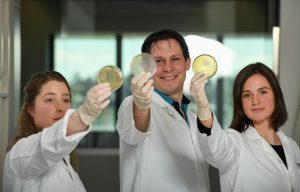It’s a slightly uncomfortable topic, yet a very common health condition that affects one in two women during their lifetime, and around one in 20 men.
Urinary tract infections, or UTIs, are painful infections that occur when bacteria enter the bladder, urethra or kidneys and multiply to cause infection.
A simple treatment of prescribed antibiotics usually kills the bacteria, yet each year, around 70,000 people are hospitalised with more severe kidney and urinary tract infections; which can even lead to death, particularly in older people.

With the rise of antibiotic resistance in the bacteria that cause many UTIs, such as E. coli, finding new and more effective ways of treating and managing UTIs is crucial.
Cutting edge genomics is now showing that, curiously, the female bladder is home to a community of bacteria – similar to the gut microbiome – even in the absence of infection.
“The female bladder has long been considered sterile except in women with UTIs caused by bacteria,” Dr Samuel Forster, research group head at Hudson Institute, explained.
“Now, using medical genomics, we are able to show that bacteria associated with health in the female reproductive tract are also able to colonise the bladder without causing clinical infection – superseding more than 100 years of medical dogma.”
“This also raises the question – if antibiotics are used to kill the ‘bad’ bacteria in patients with UTIs, could this also upset the balance of healthy bacteria that have a protective effect – much like in the gut?” he said.
The findings of a new study by Dr Forster with collaborators at the Wellcome Sanger Institute (Cambridge, UK) and Loyola University Chicago (USA) have been published in the journal, Nature Communications.
The team isolated and genome-sequenced 149 strains of bacteria found in urine samples from 77 healthy and symptomatic pre-menopausal women, then grew them in the laboratory to create a ‘living library’ of bacteria.
When the team examined the genetic profiles of these bladder bacteria, they found that startlingly, up to two thirds of the species found in the bladder were also common to the reproductive tract.
“This ‘crossover’ suggests the female bladder is not sterile, and forms part of an interconnected bacterial community with the female reproductive tract,” Dr Forster said, adding that this research has the potential to completely reshape treatment approaches for UTIs.
“More research is needed to find out whether bacteria associated with health or disease in the female reproductive tract can have the same positive or negative effect in the bladder, and vice versa.”

